Age of Exploration Teaching Resources
Bring the Age of Exploration to your elementary social studies classroom with printable worksheets, historical maps, timelines, graphic organizers, digital social studies activities and everything else you need to teach about this time in world history.
In this teacher-created collection, you’ll find teaching resources by teachers for teachers. Each digital and printable resource is curriculum-aligned and has undergone careful review by a member of our teacher team to ensure it's ready for your lesson planning, your classroom and your students!
Is this your first year teaching this section of the social studies curriculum, or are you just looking for some fresh ideas? Read on for some tips from our teacher team, including a look at some of the key exploreres of the day, a student-friendly definition of the Age of Exploration and more.
What Is the Age of Exploration? A Kid-Friendly Definition
Let's kick things off with a quick look at the meaning of the Age of Exploration with a student-friendly way to explain it.
The Age of Exploration was an important time in world history when European sailors and explorers set out to discover new lands and trade routes to faraway places. Starting in the 15th century and lasting until the 17th century, this period had a significant impact on people all around the globe.
Who Were the Age of Exploration Explorers?
The list of explorers whose names became history during the Age of Exploration is long, and it's impossible to name them all. Coming from various European countries — primarily Spain, Portugal, England, France, and the Netherlands —they were eager to find new trade routes and gain wealth.
Ferdinand Magellan
In 1519, Portuguese explorer Ferdinand Magellan famously embarked on a voyage to find a western route to the Spice Islands (also known as the Moluccas). Although Magellan didn't complete the journey himself, one of his ships, the Victoria, made it back to Spain in 1522.
This was the first recorded circumnavigation of the globe, showing that the Earth was indeed round and not flat as most people thought at the time.
Christopher Columbus
Christopher Columbus may be one of the best-known explorers of the Age of Exploration — and among the most controversial. An Italian explorer, Columbus sailed across the Atlantic Ocean in 1492.
He was trying to find a new route to Asia, but instead, he stumbled upon the Americas, which were completely unknown to Europeans at that time. His trip led to the European discovery and colonization of the Americas, and Columbus has since been honored with an American federal holiday.
The arrival of Columbus in the Americas had devastating consequences for the indigenous peoples already living there, many of them dying from diseases brought by the Europeans. The colonizers also stole the land of the Native Americans and claimed it as their own.
Vasco da Gama
Vasci Da Gama set sail from Portugal in 1497 looking for a direct route from Europe to India.
The Portuguese explorer made it to the port of Calicut in India in 1498 by sailing around the southern tip of Africa. His successful trip is credited with establishing the first direct trade route between Europe and India by sea, bypassing the land routes controlled by the Ottoman Empire.
John Cabot
John Cabot, an Italian explorer, sailed under the English flag, leaving Britain in 1497 with plans to reach Asia. Instead, he reached what is now modern-day Canada in North America. His exact landing site is still debated, but Cabot's expedition is considered one of the earliest recorded European arrivals in North America after that of the Norse Vikings.
Francis Drake
The first Englishman to circumnavigate the globe was Francis Drake, who did so in the late 16th century. Drake completed his successful journey around the world between 1577 and 1580, marking a major milestone in navigation.
His explorations had important geopolitical implications as he disrupted Spanish and Portuguese dominance in the New World, raiding their colonies and capturing their ships.
Hernán Cortés
Hernán Cortés was a Spanish conquistador known for leading an expedition from Cuba to Mexico, where he encountered the powerful Aztec civilization ruled by Emperor Montezuma II and eventually conquered the empire.
This was the beginning of Spanish colonization in Mexico and paved the way for the establishment of New Spain, which became the base for Spain's vast empire in the Americas. Like that of Columbus in North America, Cortés's expedition had profound consequences for the indigenous peoples of the region, leading to significant cultural, social and political changes.
Francisco Pizarro
Franciso Pizarro was also a Spanish conquistador whose name is often brought up when learning the history of the Age of Exploration. Pizarro is credited with conquering the Inca Empire in present-day Peru, helping the Spanish empire continue to grow its power and wealth in South America.
Juan Ponce de León
Yet another Spanish conquistador whose name is often brought up when learning the history of the Age of Exploration, Ponce de Leóni s known best for his search for the legendary Fountain of Youth and exploration of what we now call the State of Florida.
In 1513, Ponce de León became the first recorded European to explore what is now the southeastern United States. He landed on the east coast of Florida, which he then named "La Florida." His exploration and claims to Florida opened up opportunities for further Spanish expeditions and the eventual colonization of the region by Spain.
- Free Plan

Human Histories: World Explorers – Comprehension Worksheet
A free comprehension worksheet paired with an informational text about world explorers.
- Free Plan
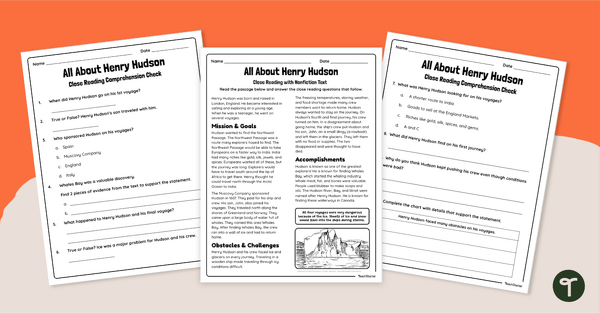
Henry Hudson Worksheet Pack
Discover famous explorers like Henry Hudson with a Henry Hudson Worksheet Pack
- Plus Plan

How to Draw a Ship - Directed Drawing Activity
Learn to draw a ship with a fun, directed drawing activity sheet.
- Plus Plan
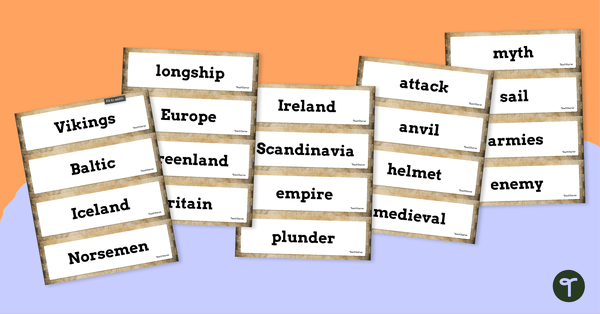
Viking Words - Vocabulary Word Wall
Print a set of viking words to review academic vocabulary in the classroom.
- Plus Plan
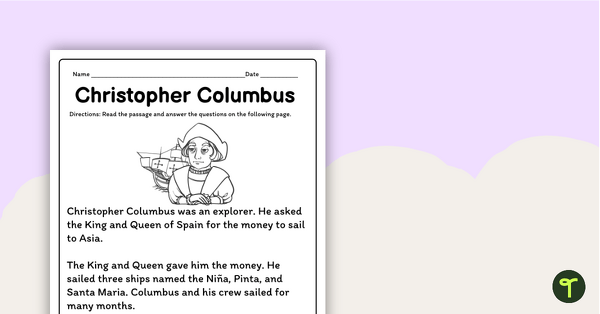
Christopher Columbus Reading Passage - Lower Elementary
Learn about Christopher Columbus and his worldly explorations with a printable reading passage and comprehension questions for first and second grade.
- Plus Plan
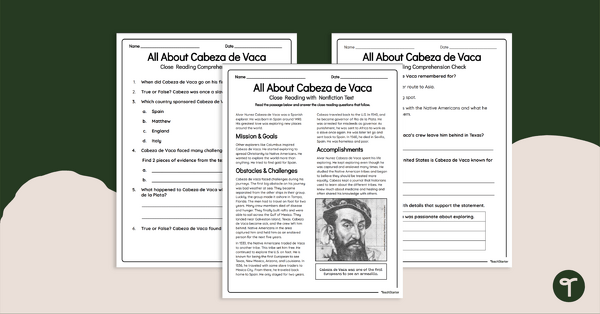
Alvar Nuñez Cabeza de Vaca - Reading Worksheet
Learn about Cabeza de Vaca’s accomplishments and explorations with a printable reading passage and comprehension questions.
- Plus Plan
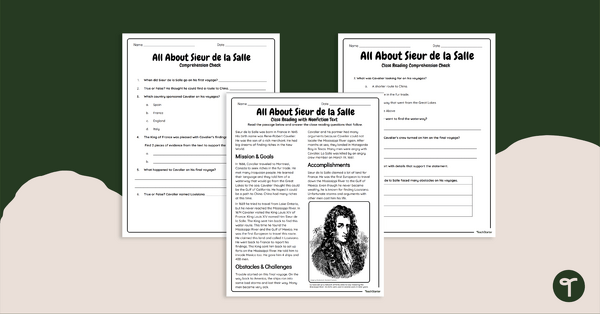
Early Explorers - Robert de La Salle Reading Passage
Learn about Robert de la Salle and his worldly explorations with a printable reading passage and comprehension questions.
- Plus Plan
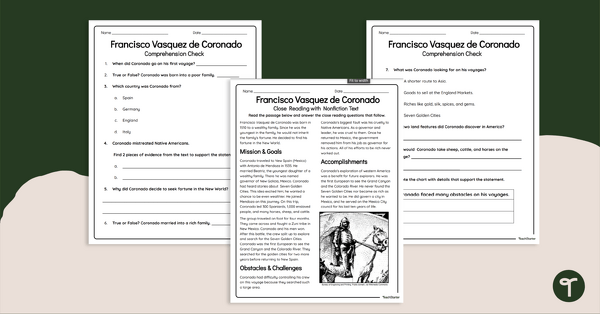
The Age of Discovery - Francisco Coronado Reading Passage
Learn about Francisco Vazquez de Coronado and his North American explorations with a printable reading passage and comprehension questions.
- Plus Plan
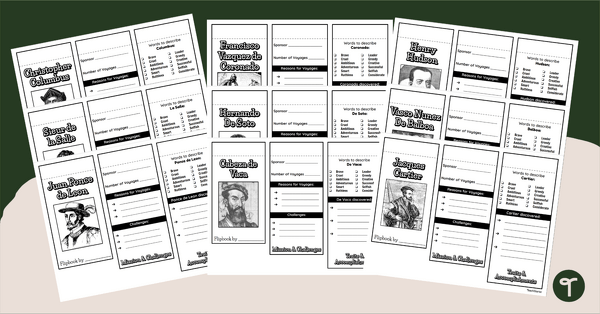
European Explorers Mini Flipbooks
Introduce your students to the many famous explorers of the Age of Exploration by having them complete a miniature explorer flip book.
- Plus Plan
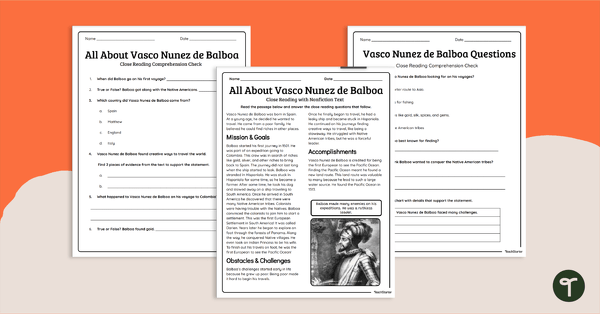
Vasco Nunez de Balboa Comprehension Worksheets
Read and analyze informational text to discover the life and accomplishments of early explorers like Vasco Nunez de Balboa.
- Plus Plan
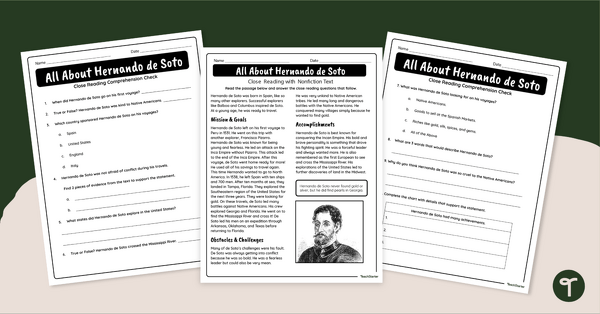
The Age of Exploration - Hernando de Soto Reading Passage
Learn about Hernando De Soto and his worldly explorations with a printable reading passage and comprehension questions.
- Plus Plan
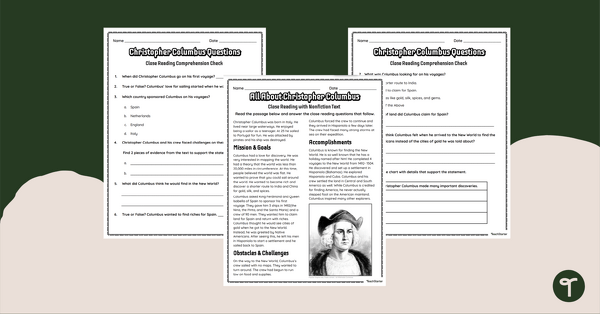
Christopher Columbus for Kids - Comprehension Worksheets
Learn about Christopher Columbus and his worldly explorations with a printable reading passage and comprehension questions.
- Plus Plan
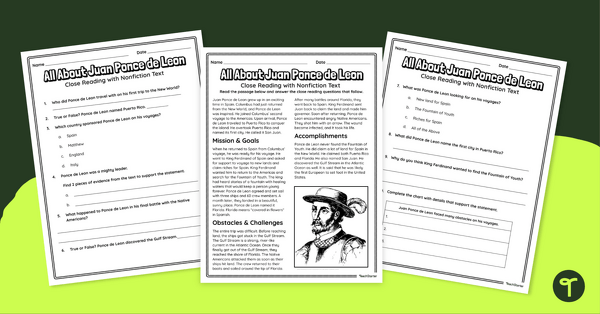
Famous Explorers : Ponce De Leon Comprehension
Read and analyze informational text to discover the life and accomplishments of early explorers like Juan Ponce De Leon.
- Plus Plan
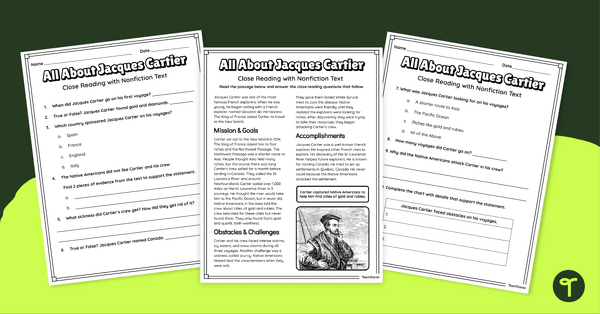
Jacques Cartier Comprehension Worksheets
Travel back in time to the Age of Exploration with a look into the life and accomplishments of Jacques Cartier.
- Plus Plan
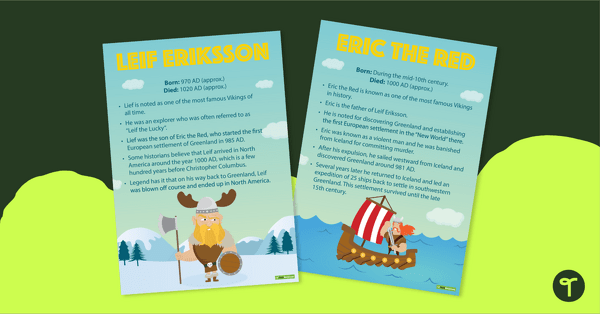
Famous Vikings in History - Anchor Charts
A set of 6 Viking posters for your ancient history classroom.
- Plus Plan

Christopher Columbus Timeline
A banner highlighting the significant events in Christopher Columbus' life.